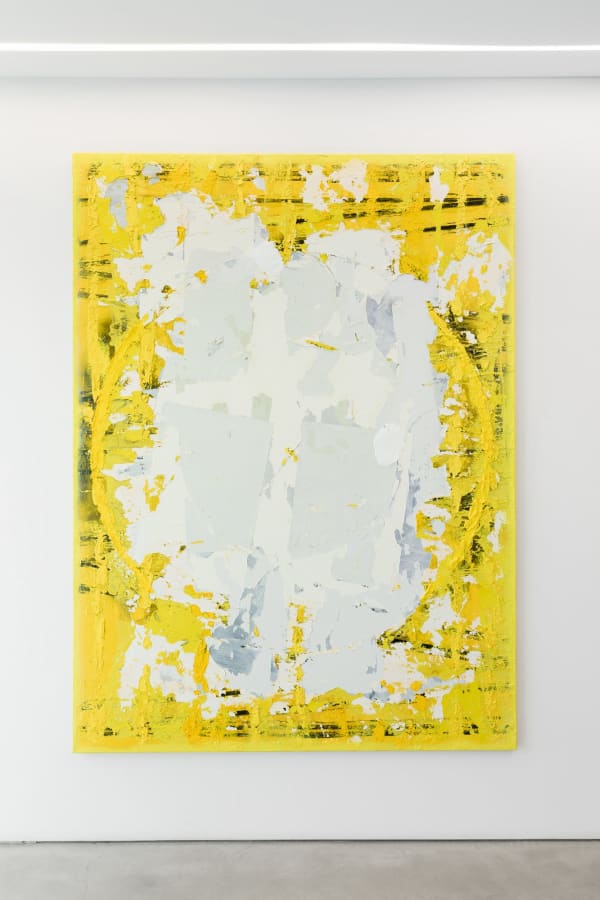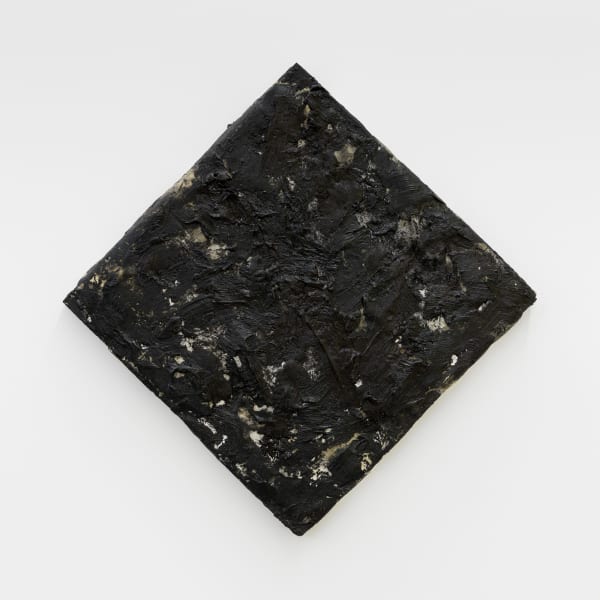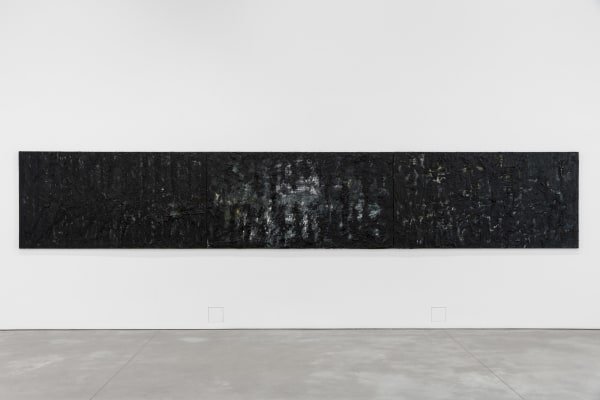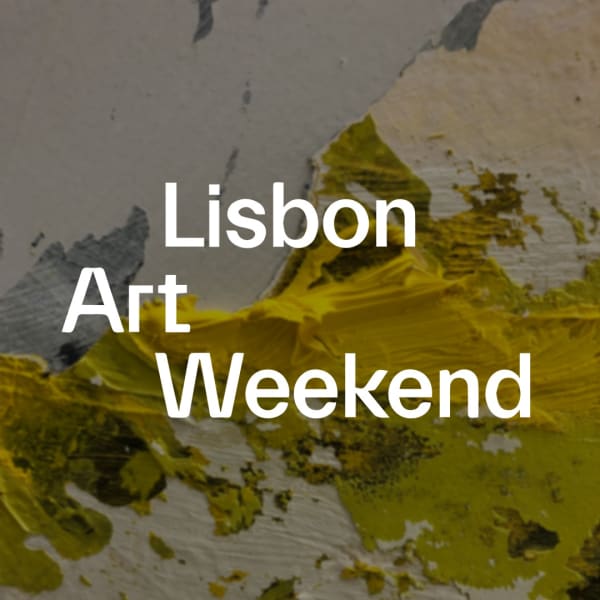Atlas: Paulo Quintas
"Ars Longa, Vita Brevis": Three paragraphs on time in Paulo Quintas’ painting
In his mid-first century CE treatise On the Brevity of Life, Seneca popularized Hippocrates’ old dictum ‘ars longa, vita brevis’. In both the Greek (techne) and the Latin (ars), the word refers to the task of mastering a knowledge for which life is too short, but the phrase became prevalent as an opposition between the brevity of human life and art’s ability to extend beyond it, to endure in time and, in the last analysis, to aspire to immortality. Throughout history painting introduced the question of time from various perspectives – from Caravaggio’s slightly rotting fruits to the ‘vanitas’ and ‘cogito mori’ that pointed to the transitoriness of human life. On the other hand, the romantic poetics of ruin, or the modern, ephemeral quality of installation and performance directly question art’s ambition to the perennial. The question of time occurred to me as I saw Paulo Quintas’ large yellow paintings at his studio in Santa Rita beach. They bring to this exhibition an immediate memory of the aged walls of Alentejo’s houses, with their surfaces of accumulated layers of lime tormented by time, which exposes various older levels of decaying paintings that form a memory map of both their creation and the ravages of the seasons and abandonment. In these enormous paintings it is possible to glimpse the traces of ancient forms of geometric solids often used by Paulo Quintas, along with new vertical strokes that organize their structure, as well as successive actions that conceal those basic forms through the addition of consecutive layers or un-conceal them through various methods of abrasion, both controlled and random, that turn the final image into a sort of portrait of the various times involved in the production of the piece.
‘The revelation of its process’ is an essential aspect of Paulo Quintas’ painting (as mentioned by C. Vidal in Mare Aethiopicum, 2020, p.7), and the artist himself has referred to his works as ‘constructed rather than painted’ (in I. Carlos, Todos os Títulos estão Errados [All titles are wrong], 2018, p. 36). Solid, basic forms – crosses, circles, parallel lines – create a structure joined by standardized formats and a short, systematic palette to form a firm basis that allows for the anchoring of the construction processes, in which different media and procedures are applied to trace a scarring of the canvases’ creation stages. However, in the case of the large yellow canvases featured in this exhibition, the memories of the creative process are accompanied by the successive concealment of the painting’s prior phases, which manifest as brief fragmented memories as the painting’s various times become a structural element of the work, a part of its body and therefore an exact image of its ephemeral quality and, disturbingly, of the transitoriness of art and of ourselves.
The arrangement of the works in this exhibition also appeals to the individual memory of former experiences of Paulo Quintas’ oeuvre: two square canvases return to the ‘crosses’ that align with his reference colours – yellow, red, Prussian blue and white – and to models of expressive standardization and execution; a photograph of the cliffs over the Ericeira sea is covered in white and black paint, in sprinkles and drips, according to a process of concealment that transforms the original image into a memory of fog that is simultaneously lyrical and oneiric. Perhaps we should recall Quintas’ early experiments with the partial concealment of reproductions of Leonardo da Vinci’s figures (in his 1984-5 drawings) using white paint, or the constellations of Supernovae Boulevard (2000-2001), which explore the repetition of certain effects on the canvas surface. Finally, the vast black triptych A Grande Noite [The great night], which is actually made with greys, blacks and variations of gold and displays unequal gleaming varnishes, was painstakingly worked to obtain a material density that renders it almost sculptural as the complementariness in the pattern of the three paintings fills the viewer’s visual field to produce a magically hypnotic effect that imprisons the gaze. Indeed, the lengthy gaze that Paulo Quintas’ painting calls for is not only the outcome of the finished work but also of the complicity with the process of its creation, as if the times of its creation flowed before our eyes like a film of his addition and erosion gestures, of the balancing work between structure and a feverish construction of surfaces in the dense matter of images.
Joaquim Oliveira Caetano
-
 Paulo QuintasAtlas (2012-2022) I, 2012-2022Mixed media on canvas270 x 200 cm
Paulo QuintasAtlas (2012-2022) I, 2012-2022Mixed media on canvas270 x 200 cm -
 Paulo QuintasAtlas (2012-2022) II, 2012-2022Mixed media on canvas220x180 cm
Paulo QuintasAtlas (2012-2022) II, 2012-2022Mixed media on canvas220x180 cm -
 Paulo QuintasAtlas (2012-2022) III, 2012-2022Mixed media on canvas270x200 cm
Paulo QuintasAtlas (2012-2022) III, 2012-2022Mixed media on canvas270x200 cm -
 Paulo QuintasAtlas (2012-2022) IV, 2012-2022Oil on canvas260x130 cm
Paulo QuintasAtlas (2012-2022) IV, 2012-2022Oil on canvas260x130 cm -
 Paulo QuintasAtlas (2012-2022) V, 2012-2022Mixed media on canvas270x200 cm
Paulo QuintasAtlas (2012-2022) V, 2012-2022Mixed media on canvas270x200 cm -
 Paulo QuintasPequena noite, 2012-2022Oil on canvas60x60 cm
Paulo QuintasPequena noite, 2012-2022Oil on canvas60x60 cm -
 Paulo QuintasLuar, 1983-2022Oil on photographic paper130x250 cm
Paulo QuintasLuar, 1983-2022Oil on photographic paper130x250 cm -
 Paulo QuintasAtlas (2012-2022) VI, 2012-2022Oil on canvas60x60 cm
Paulo QuintasAtlas (2012-2022) VI, 2012-2022Oil on canvas60x60 cm -
 Paulo QuintasAtlas (2012-2022) VII, 2012-2022Mixed media on canvas270x200 cm
Paulo QuintasAtlas (2012-2022) VII, 2012-2022Mixed media on canvas270x200 cm -
 Paulo QuintasAtlas (2012-2022) VIII, 2012-2022Mixed media on canvas270x200 cm
Paulo QuintasAtlas (2012-2022) VIII, 2012-2022Mixed media on canvas270x200 cm -
 Paulo QuintasAtlas (2012-2022) IX, 2012-2022Oil on canvas260 x 140 cm
Paulo QuintasAtlas (2012-2022) IX, 2012-2022Oil on canvas260 x 140 cm -
 Paulo QuintasGrande Noite, 2012-2022Oil on canvas130x750 cm
Paulo QuintasGrande Noite, 2012-2022Oil on canvas130x750 cm
















